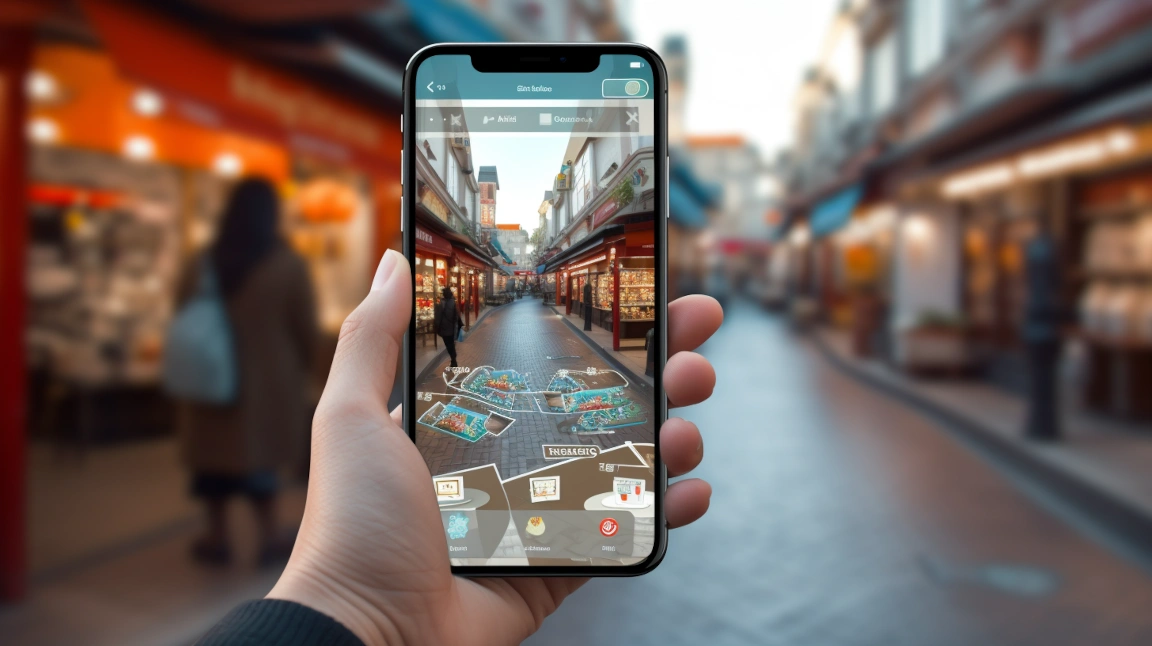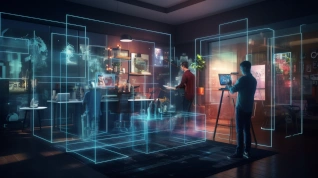Augmented reality in tourism

Augmented reality (AR) is no longer just the domain of games and entertainment - it is now increasingly making its presence felt in tourism too. With AR, travel is becoming even more interactive, engaging and educational. In this article, we will discuss how augmented reality is improving the tourism experience and what opportunities it opens up for the travel industry.
Introduction to augmented reality in tourism
Augmented reality (AR) is a technology that rapidly has become increasingly popular within the tourism industry. It helps travellers to explore the world around them in an immersive way, enabling them to experience destinations in a whole new way. Augmented Reality is a system that combines the real and virtual worlds to provide users with a unique experience.
AR technology works by overlaying digital information, images and graphics onto the real world. As a result, AR has the potential to revolutionise the tourism industry, providing tourists with an enhanced and personalised experience they will never forget. Using a smartphone or goggles (AR goggles), users can read information about the landmark history superimposed on the existing panorama, see restaurant recommendations or turn on navigation in an existing environment. This technology allows tourists to experience the places they visit in a completely new way. Moreover, AR has already proved to be beneficial to several key areas within the travel industry, such as trade and training.
What are the benefits of introducing AR into the tourism industry?
The benefits of augmented reality for tourists are significant. AR technology helps tourists better understand and appreciate the history, culture and architecture of a place by providing them with relevant information in real time. AR can also help tourists navigate unfamiliar places more easily by providing them with directions, translation and other useful information.
In addition, AR helps tourists make more informed decisions about where to eat, what to see and what to do, using personalised recommendations based on their interests and preferences. AR has the potential to improve the experience for both tourists and businesses by providing unique and personalised information.
See also the advantages of implementing AR in the manufacturing industry.
Examples of augmented reality in tourism
Augmented reality (AR) technology is revolutionising the way we experience travel and tourism. AR apps help travellers learn about places, sights and attractions in the most efficient way possible. There are many AR apps available for Android and iOS devices that enhance the travel experience. In this article, we will look at some examples of how augmented reality is being used in tourism today.
Also read: the differences between AR and VR.
City tours
One of the most popular uses of augmented reality in tourism is city tours. AR apps provide visitors with virtual guides, highlighting places of interest and providing information on history of each location. For example, the AR City app allows users to explore cities such as London, Paris and New York. Users can point their phone at a building or landmark and the app will superimpose information about the history and importance of the place on the display. This makes city tours more immersive and informative, allowing visitors to learn about the city's history and culture in a funny and interactive way.
Visits to historical sites
Augmented reality is also used to enhance the experience when visiting historical sites and museums. AR technology brings exhibits to life, guaranteeing visitors a fantastic experience. The Smithsonian American Art Museum's 'Wonder 360' app, for example, uses AR to enable visitors to explore the museum's collection in new and exciting ways. Users can point their phone at a painting or sculpture and the app will provide additional information about the work and the artist who created it. Similarly, the AR app 'Unseen Tours' serves up augmented reality tours of the East End of London, highlighting the area's rich history and culture.
Maps
Augmented reality maps are an innovative tool. One popular app using augmented reality maps for tourists is 'Google Maps AR'. This app allows users to use AR features to get real-time navigation directions. For example, when walking through an unfamiliar city, the user points their camera at the street and the app will display information about landmarks, shops or restaurants superimposed on the image. In this way, travellers can find their way around a new place more easily.
The future of augmented reality in tourism
Thanks to the development of webAR and dedicated AR applications, users will better understand and appreciate the places they visit.
The AR technology is already being used in several key areas of the tourism industry, including virtual tours of museums and historical sites, interactive travel guides and location-based services providing information about nearby attractions. As the AR technology continues to evolve, its potential for growth and innovation in the tourism industry is enormous..
Augmented reality can be integrated with other technologies to provide travellers with the information they need quickly and easily, as well as with fantastic entertainment.
For example, the Louvre in Paris has an interactive tour that uses AR technology to present its collections in an interesting and immersive way. AR can also be combined with virtual reality (VR) to create a mixed reality experience in which travellers explore virtual environments superimposed on the real world. As AR technology continues to evolve, the possibilities for its integration with other technologies are endless.
As AR technology becomes more widespread and affordable, it seems a question of time before it spreads to new areas.
Are you interested in today's article? If so, we encourage you to learn even more about AR technology and visit seemymodel.com, where you can test the 3D configurator and see what 3D visualization of product using augmented reality looks like, which you can implement in your business today. You are welcome!
Do you like the post? Share to others!

Krzysztof Basista
COO
For years, he has been involved in AR / VR projects ranging from entertainment to heavy industry. Always looking for problem solving through technology.
Contact us
Related posts

Have you wondered what it would be like if the boundaries between the virtual world of games and reality began to blur? In recent years...

Augmented reality (AR) is increasingly boldly entering the classroom, offering new, interactive teaching methods. It transforms...

The Metaverse is a concept that is increasingly emerging in discussions about the future of technology and the digital world...

In an era where efficient, effective, and engaging training is integral to a company's success, many are turning to emerging technologies for solutions...

It is a powerful tool for presenting complex 3D models in a friendly and intuitive way. With the right techniques, you can easily visualise...

It is said that everything is worth what someone is willing to pay for it. However, as is sometimes the case with innovation, the cost of creating it...





